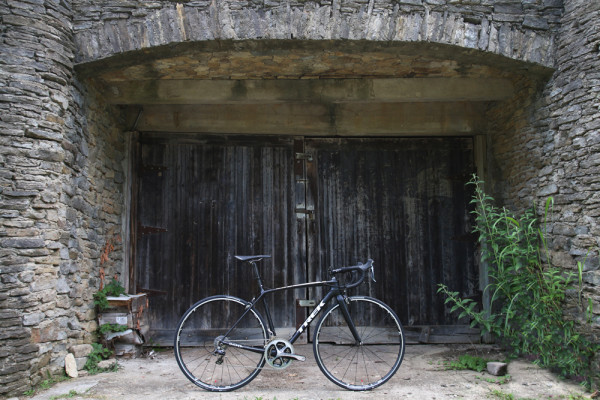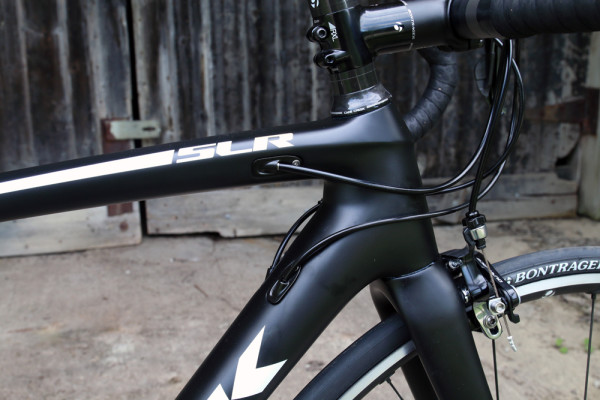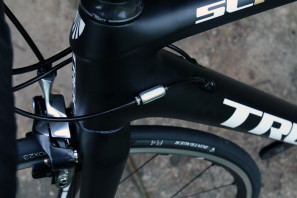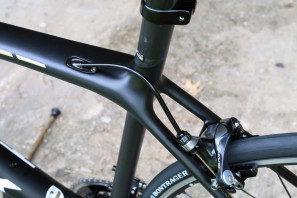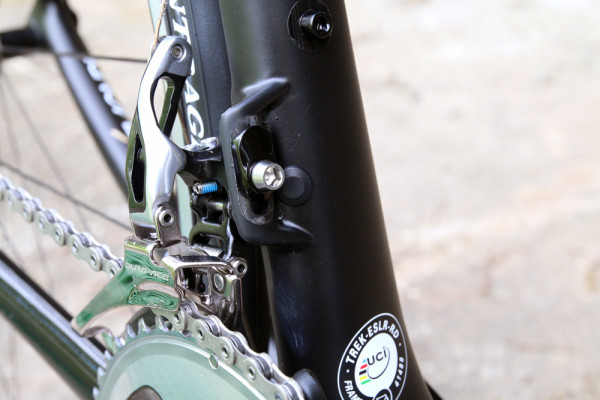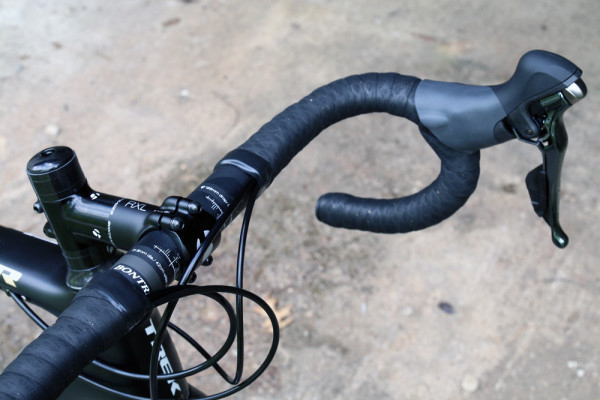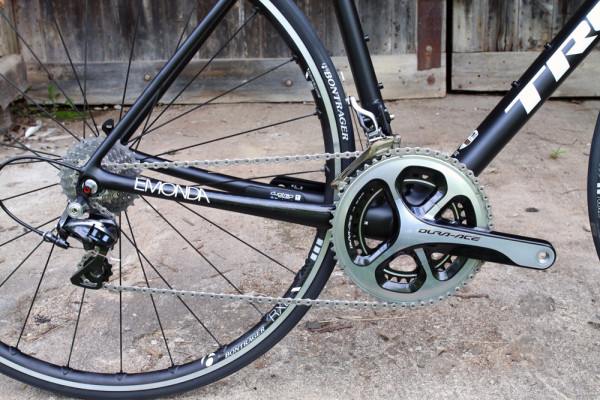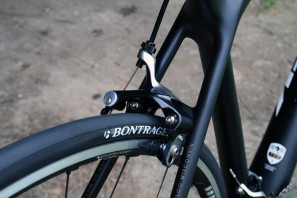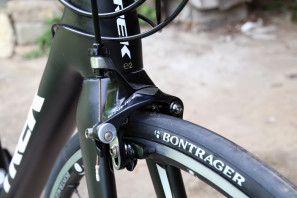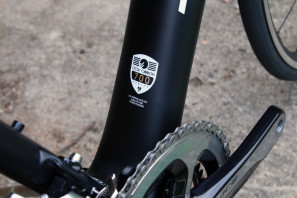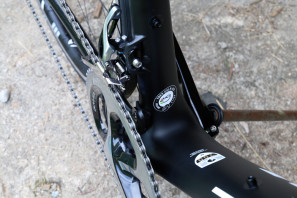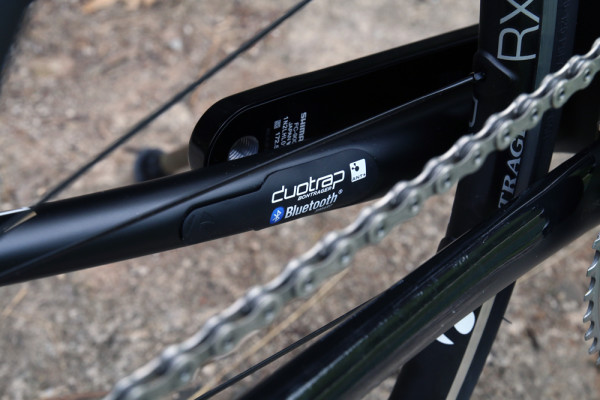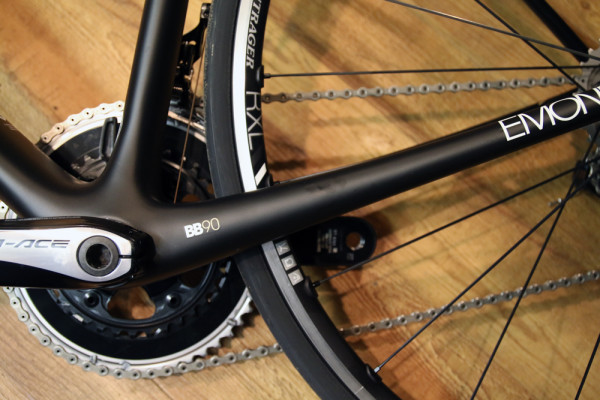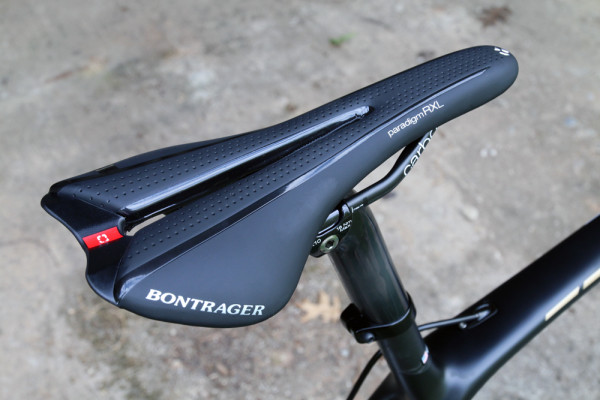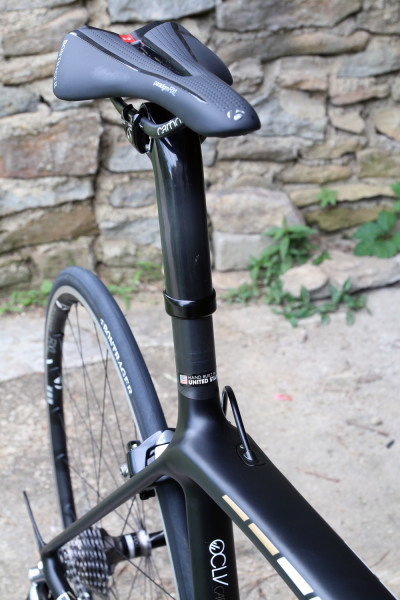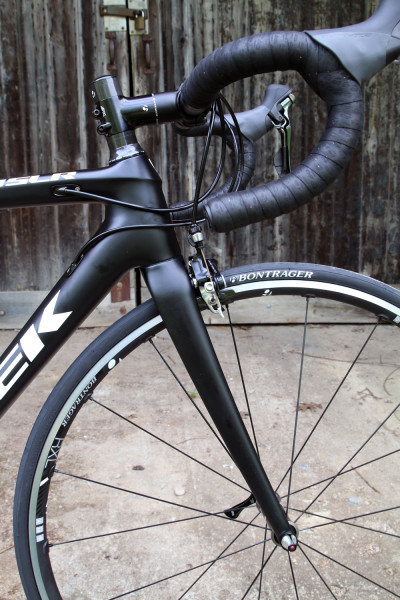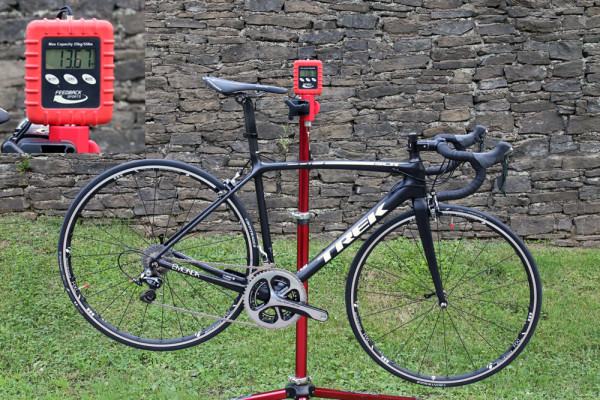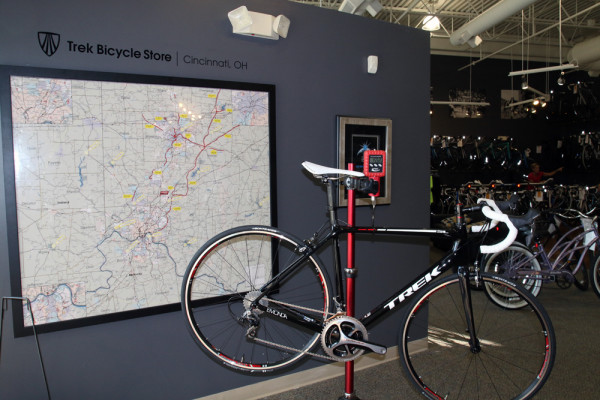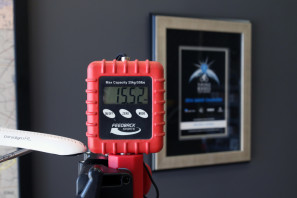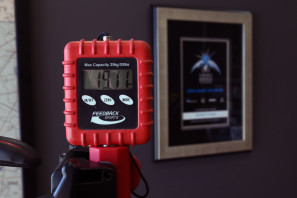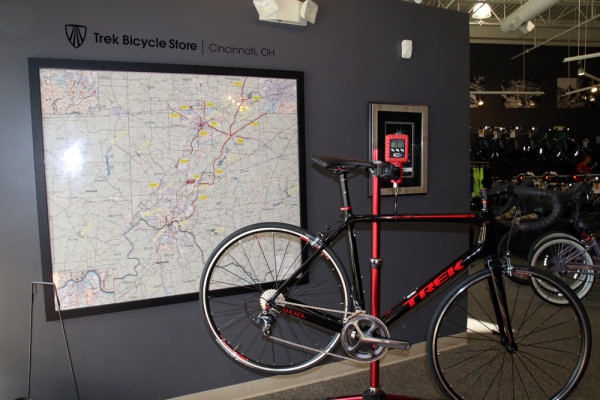It may be a while until we see the insanely light Émonda SLR 10 in the flesh carbon, but head to your local Trek dealer and there are probably a number of more affordable models already on the floor. Joining in with a few other brands, Trek is continuing to wait until the new bikes are actually available before unveiling them to the public. In our case it also means that an Émonda SLR 8 just showed up for review. Other than the Carbon Vapor Coat paint job and SLR Ride Tuned Seat Mast Cap, the SLR 8 boasts the same frame as the bike at the top. It’s also less than half the price – which is crazy to say about a $7,500 bike.
Trim away the details after the break, including actual weight for the SLR 8 plus a few other models…
Built with fully internal cable routing, each port has a replaceable cable stop that is bolted in place. Émonda frames are Di2 ready, with plugs available for unused cable ports.
In the name of saving grams, the front derailleur braze on mount is molded into the carbon.
Wondering where some of that money is being saved? Instead of the pricey one piece carbon bar/stem combo on the 10, the 8 sticks with an RXL aluminum stem and XXX VR-C carbon handlebar. Wheels are also a huge source of savings with the SLR 8 opting for Bontrager RXL tubeless ready aluminum wheels and R4 Hard-Case Lite tires. Considering the beating we’ve put a pair of RXL TLR wheels through, they seem to be a perfect classics wheelset and are pretty light at 1440g. The wheels ship with tubes, but can easily be converted to tubeless with a Road TLR Conversion kit. Our advice? Wear out the stock tires that come with the Émonda and then upgrade to tubeless. You’ll be glad you did.
Equipped with a full Dura Ace group including the brakes, Trek opts for the mechanical group to save every gram possible. Stock bikes include a semi-compact 52/36 crank and an 11-28 cassette which offers a fairly wide range of gearing. Instead of the Bontrager Speed Stop brakes, the SLR 8 uses Dura Ace Integrated brakes that are still the two post design.
In addition to the weight savings, the new Bontrager Duotrap S is an interesting change. The integrated speed and cadence sensor gets an even cleaner appearance, no longer showing on the outside of the chainstay. Since the system still uses a crank arm mounted magnet, we can only assume that the magnet is strong enough for the sensor to pick up the signal through the wall of the carbon. Not only is the design cleaner, but only making one hole in the chainstay instead of two surely makes the design lighter and stronger with less carbon.
The use of trek’s Ride Tuned Seat Mast Cap makes the frame’s 690g weight even more impressive since half of the seat post is technically included in the weight. As usual, 5 and 20mm offset seat mast caps are offered though 20mm comes standard. On top sits the Bontrager Paradigm RXL Carbon railed saddle. The seat mast is also sporting a very prominent Hand Built in the United States sticker in case you were wondering. Happy 4th of July!
The Émonda fork is a simple, slender design. Just carbon legs, carbon dropouts, and a full carbon E2 asymmetric steerer rolling on a Cane Creek IS-8 headset.
How close are Trek’s claimed weights? Our 54cm test bike came in at 13.67 lbs (6.2 kg), just over the claimed weight of 13.56 lbs for a 56 cm. We’re pretty sure we could remove some excess cable housing and get it pretty close.
Thanks to Jacob at the Trek Store Cincinnati, we got a few other Émondas on the scale as well. There would have been a bigger sample size, but one of the Émondas was sold almost as soon as it was built. Boasting an impressive full Dura Ace build for $4,519, the 56cm Émonda SL 8 weighed in at 15.52 lbs which is under the 15.56 lbs claimed weight. A 58cm Émonda S 6 below measured 19.11 lbs which is a bit more than the 18.47 lb claimed weight, though Trek is using a 56cm for their claimed weights. So again, pretty close. Again a pretty good deal on paper, the S 6 offers a full Shimano Ultegra group for $2,629.
